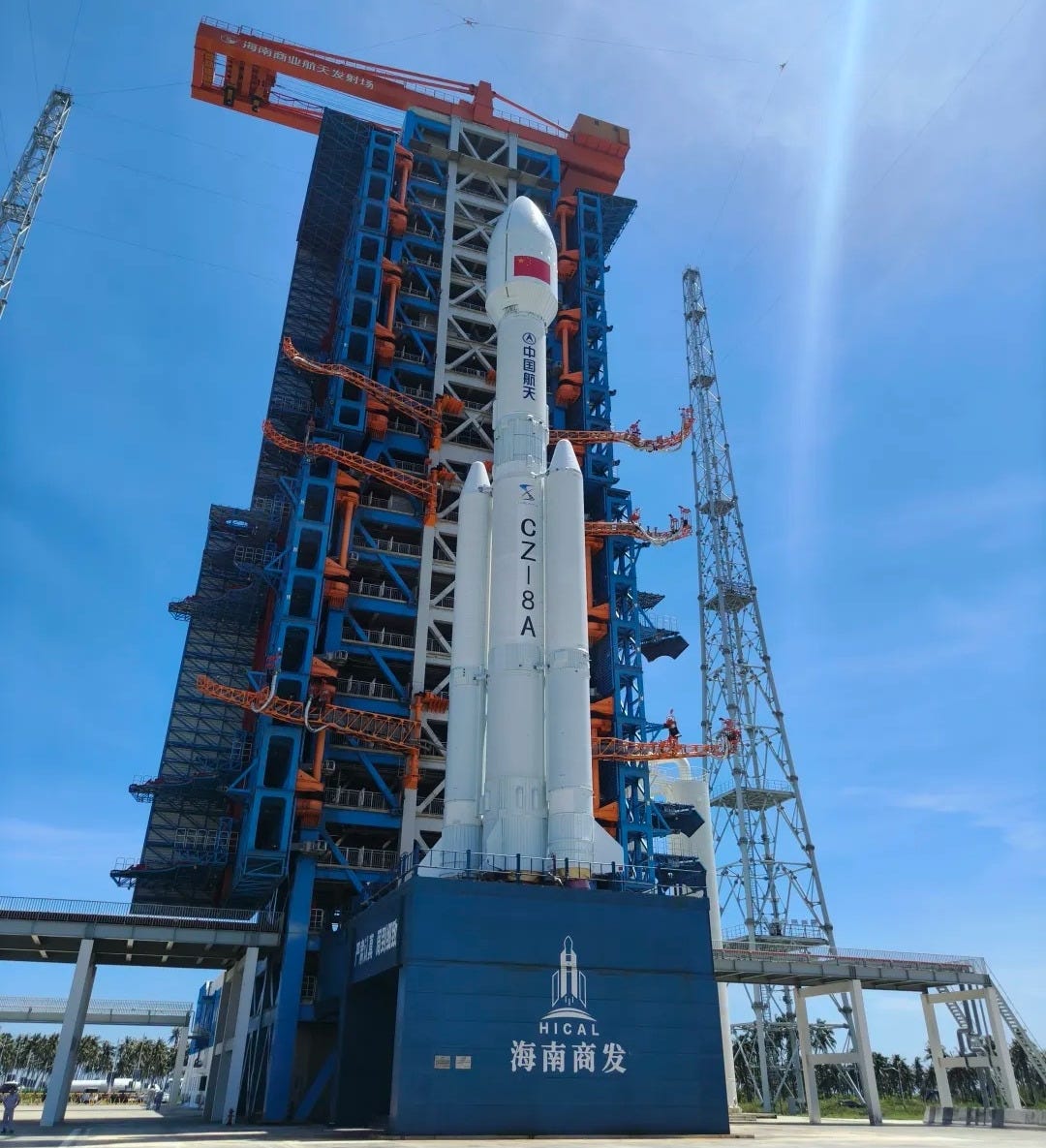GuoWang Closes in on Qianfan [Long March 8A Y2]
Meanwhile, the Long March 8A is growing its flight cadence.
At 03:08 am China Standard Time, on August 26th (19:08 pm Universal Coordinated Time, August 25th), a Long March 8A lifted off from Commercial Launch Pad 1 at the Wenchang Commercial Space Launch Site heading for low Earth orbit, with a group of internet satellites onboard.
Atop of the Long March 8A were the tenth batch of GuoWang (国网) mega-constellation satellites, with another nine satellites onboard like prior Long March 8A missions. The China Academy of Space Technology says they contributed to the satellite batch.
The GuoWang constellation is operated by China Satellite Network Group, a state-owned enterprise, and wholly backed by the Chinese government, who plan to have around 400 satellites deployed by 2027. In the 2030s, up to 13,000 satellites could be in orbit, providing worldwide internet services; however, China-focused services will be the immediate priority, with relevant licenses being acquired currently.
GuoWang is rapidly catching up, now having launched six times in thirty days and 81 total satellites in space, with the Qianfan (千帆) mega-constellation, also set to provide space-based internet services, with its 90 satellites in orbit. This has been enabled by the lack of deployment of Qianfan satellites, which is believed to be on hold to troubleshoot some satellite issues.
Two different satellite variants are believed to be in use for the constellation, a larger version used on vehicles like the Long March 5B, while smaller ones are used when launched atop rockets such as the Long March 6A or Long March 12. An electric propulsion system is likely in use due to a planned operational orbit above 1000 kilometers in altitude, as it would be the most efficient means of propulsion to deorbit each spacecraft once they reach the end of their operational lives after several years.
Ahead of today’s launch mission, improvements and optimizations were made to parallel workflows in preparing Long March 8A vehicles from the commercial launch site, according to the China Academy of Launch Vehicle Technology, said to bring preparation times down to about one week. In the near future, preparation responsibilities will be handed over to Capital Aerospace Machinery Co Ltd (首都航天机械有限公司), who manufacture parts of the vehicle and its engines, to improve factory-to-launch pad efficiency.
In a secondary post-launch article about the mission, the launch vehicle academy highlighted that the Long March 8A has flown three times since its debut, which occurred six months ago, enabled by the above-mentioned parallel workflows, which has a fourth vehicle almost ready too. It was noted as well that, due to existing facilities, the vehicle could fly as many as ten times per year currently, with plans to double its cadence through a second testing and preparation stand expected to be completed in October. Eventually, the rocket could fly fifty times per year.
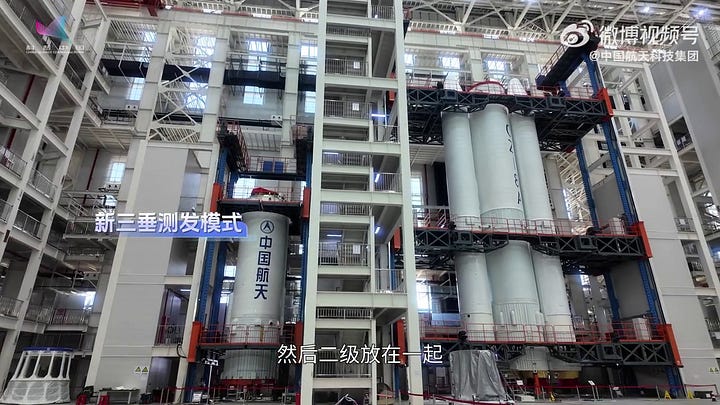

This mission was the 3rd launch of a Long March 8A vehicle, the 7th launch of the Long March 8 series, and the 591st launch of the Long March launch vehicle series. This was also the 50th launch from China in 2025.
Liftoff video via Vony7 and SpaceLens云上天镜 on Weibo.
Livestream replay via ThatSpaceDogeGuy on YouTube.
Check out the previous Long March 8A launch
More GuoWang Satellites Launched From Wenchang [Long March 8A Y3]
A Long March 8A blasted off from Commercial Launch Pad 1 at the Wenchang Commercial Space Launch Site at 15:49 pm China Standard Time (07:49 am Universal Coordinated Time) on July 30th, heading to low Earth orbit with another group of internet satellites.
What is the Long March 8A?
This section is for those less familiar with China's Long March series of launch vehicles.
The Long March 8A is an improved and more cost-efficient upgrade of the Long March 8 and the future workhorse of its developer, the China Academy of Launch Vehicle Technology. The vehicle utilizes a two-and-a-half-stage design and is fuelled by rocket-grade kerosene and liquid oxygen in its first-stage and boosters along with liquid hydrogen and liquid oxygen in the second-stage.
The payload capacity of the launch vehicle is currently as follows:
9,800 kilograms to low Earth orbit
7,000 kilograms to a 700-kilometer sun-synchronous orbit
6,800 kilograms to a 900-kilometer sun-synchronous orbit
3,500 kilograms to geostationary transfer orbit
The Long March 8A's boosters and first-stage are powered by YF-100 engines, with two engines on the first stage and one on each of the two boosters, generating a combined thrust of 490 tons at liftoff. The second-stage is equipped with two YF-75H, also referred to as YF-75DA, engines which produce 20 tons of thrust.
On the launchpad, the core alone Long March 8 stands at 50.5 meters tall and weighs 371,000 kilograms when fully fuelled. The first and second-stage have a diameter of 3.35 meters, the two boosters have a diameter of 2.25 meters, while the fairing has a diameter of 4.2 or 5.2 meters.
Currently, the Long March 8A is flown from the Wenchang Space Launch Site and the Wenchang Commercial Space Launch Site, both on the east coast of Hainan province.
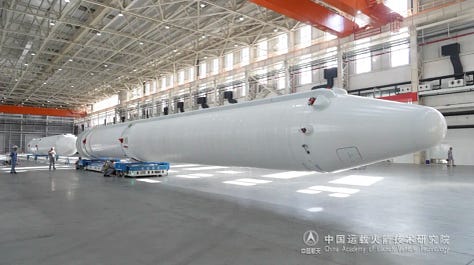
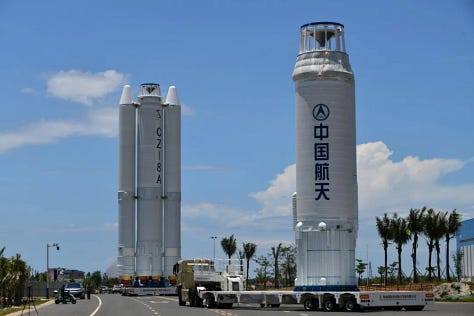
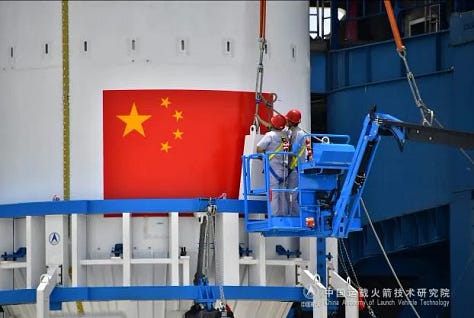



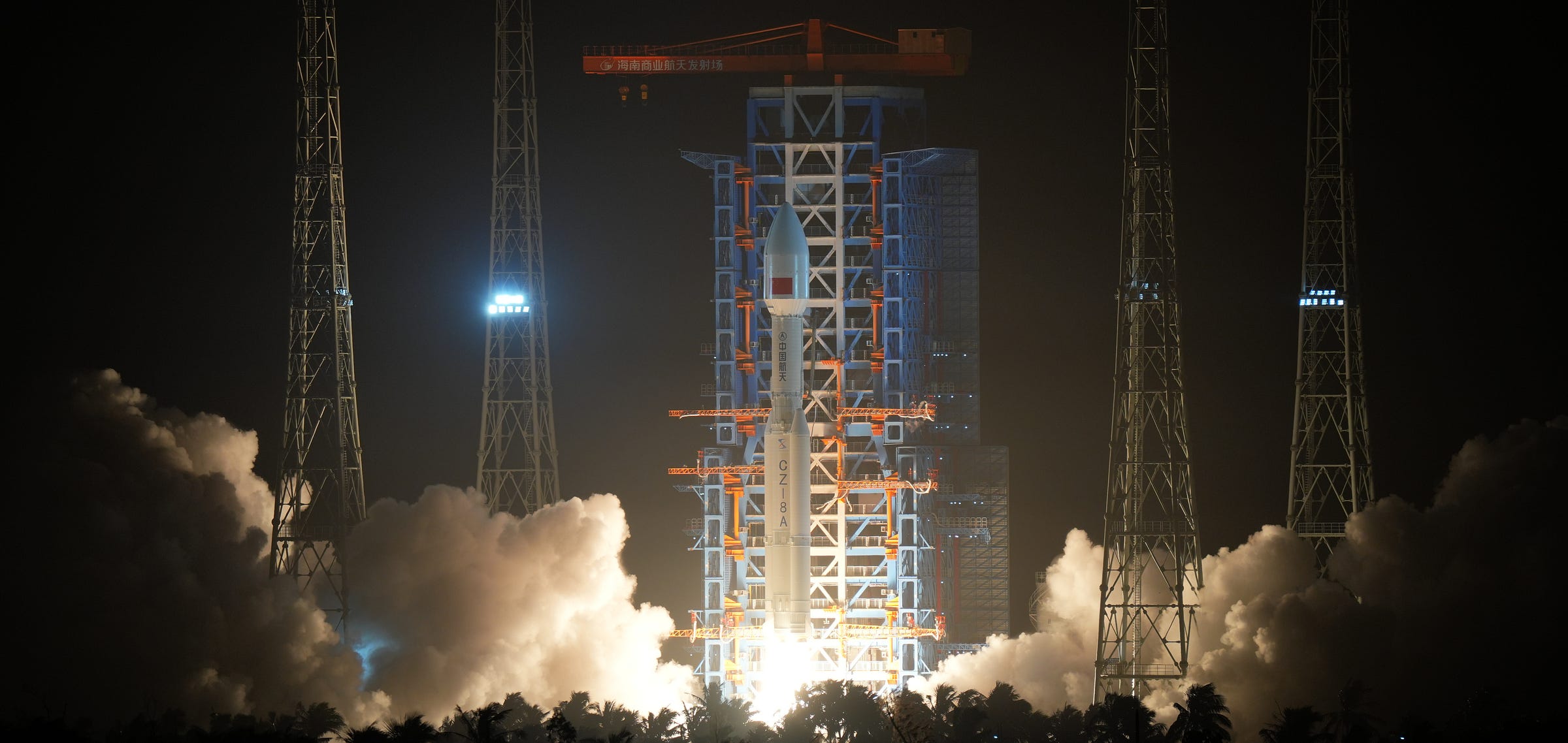

![More GuoWang Satellites Launched From Wenchang [Long March 8A Y3]](https://substackcdn.com/image/fetch/$s_!8__v!,w_1300,h_650,c_fill,f_auto,q_auto:good,fl_progressive:steep,g_auto/https%3A%2F%2Fsubstack-post-media.s3.amazonaws.com%2Fpublic%2Fimages%2Fc8d1b2f2-2d9d-4786-9fc1-12517d3d4c2c_6165x3494.jpeg)
